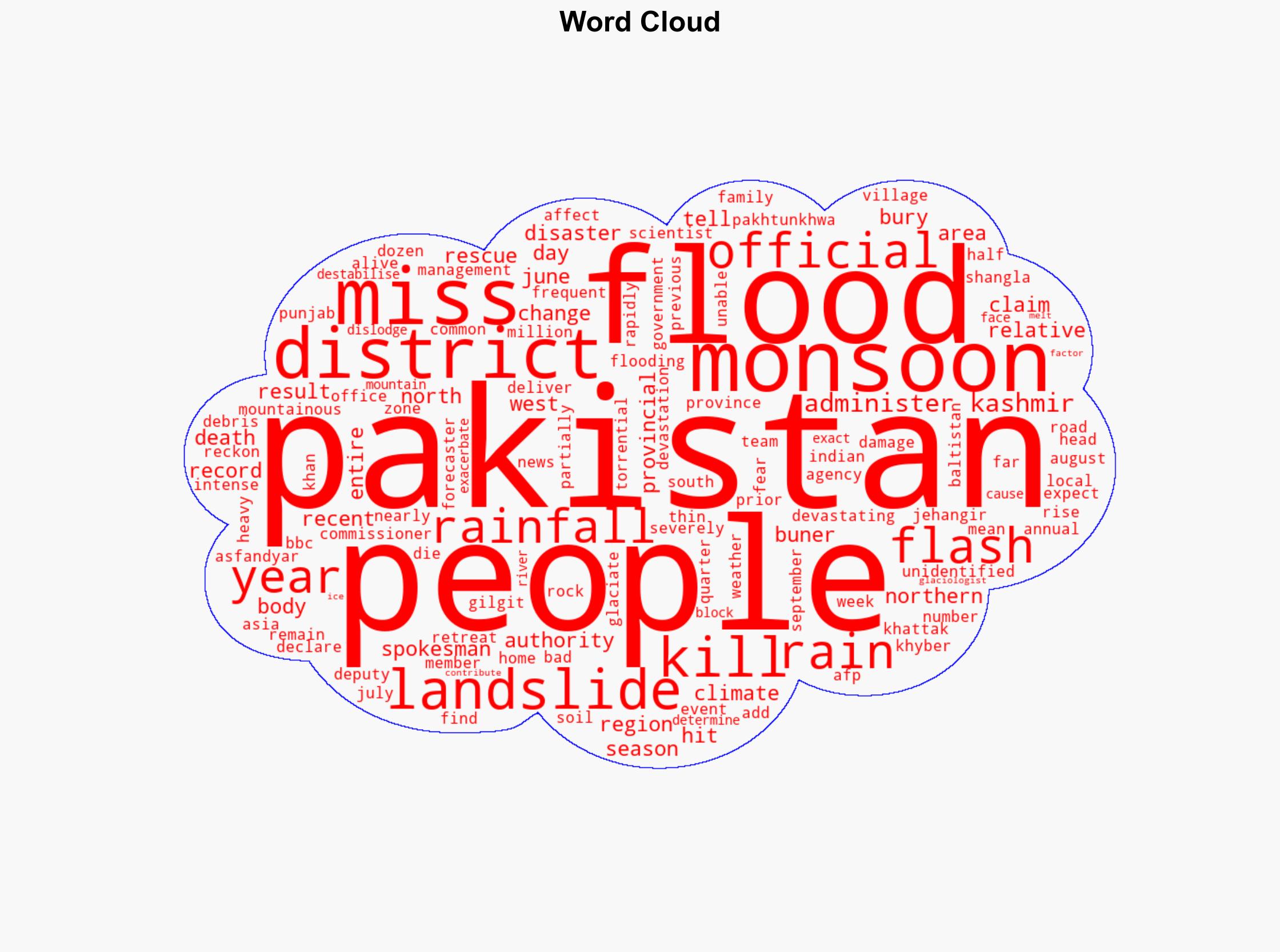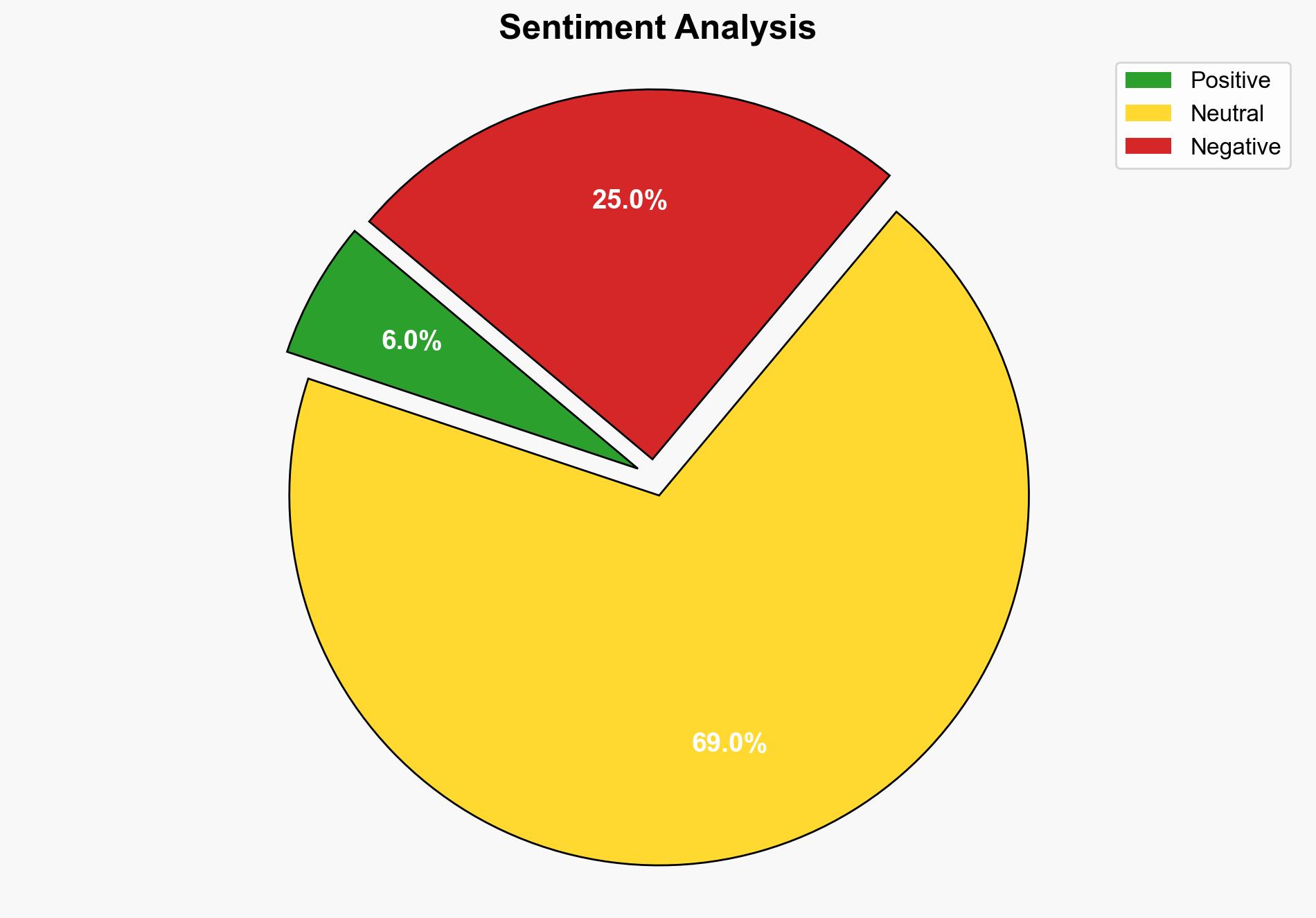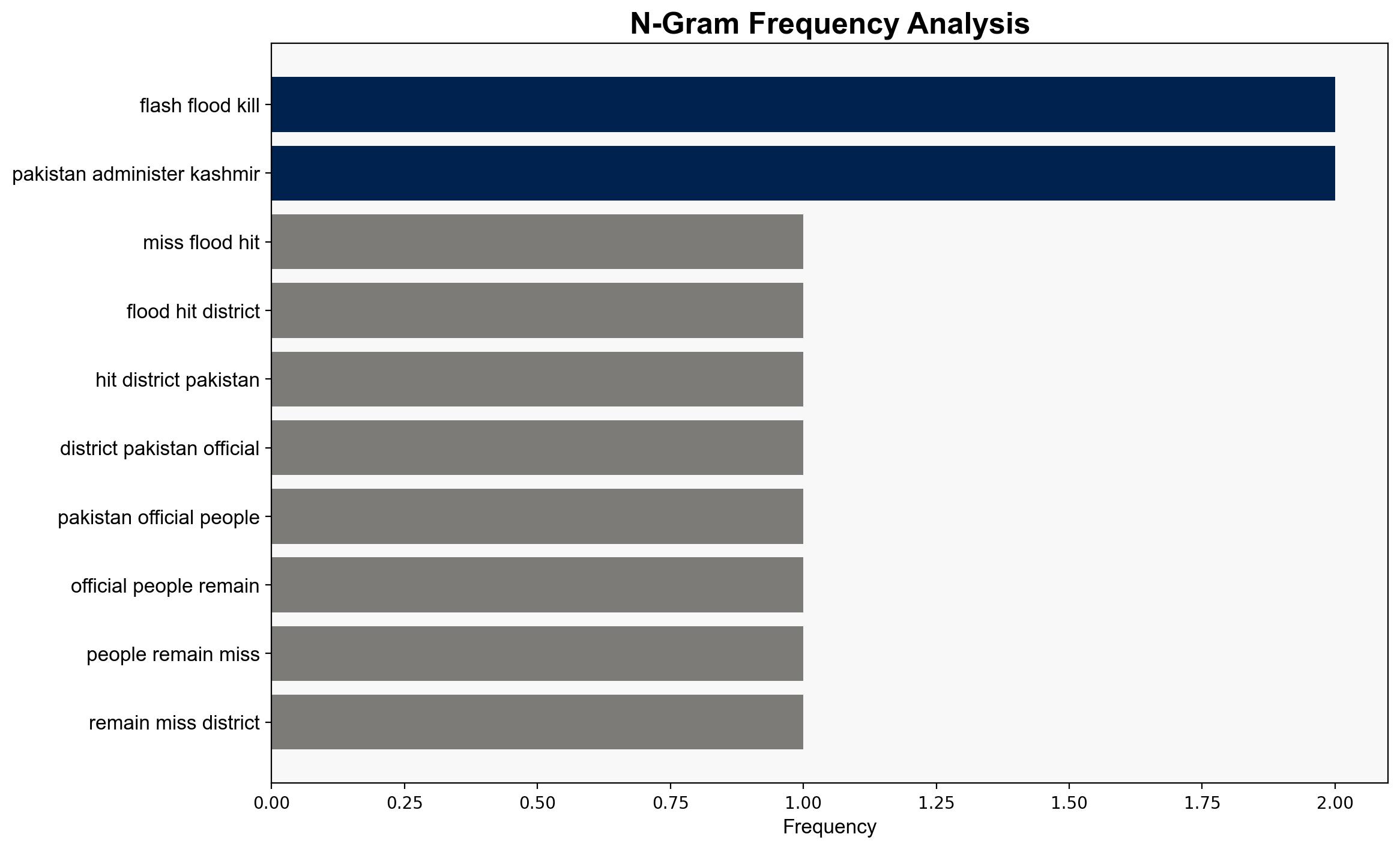More than 200 missing in flood-hit district in Pakistan official says – BBC News
Published on: 2025-08-17
Intelligence Report: More than 200 missing in flood-hit district in Pakistan official says – BBC News
1. BLUF (Bottom Line Up Front)
The most supported hypothesis is that climate change is exacerbating the frequency and intensity of monsoon rains, leading to increased flooding and landslides in Pakistan. This hypothesis is supported by historical weather patterns and scientific consensus on climate change impacts. Confidence level: High. Recommended action: Enhance regional disaster preparedness and climate adaptation strategies.
2. Competing Hypotheses
1. **Hypothesis A**: The recent floods and landslides in Pakistan are primarily due to climate change, which is increasing the intensity and frequency of monsoon rains.
2. **Hypothesis B**: The floods and landslides are primarily due to inadequate infrastructure and poor land management practices, which fail to mitigate the impacts of natural weather events.
Using ACH 2.0, Hypothesis A is better supported by the evidence of increased rainfall and scientific studies linking climate change to more severe weather patterns. Hypothesis B, while plausible, lacks specific evidence in the source text regarding infrastructure failures.
3. Key Assumptions and Red Flags
– **Assumptions**: Hypothesis A assumes that climate change is the dominant factor influencing weather patterns. Hypothesis B assumes that human factors, such as infrastructure, play a significant role.
– **Red Flags**: Lack of detailed data on infrastructure conditions and specific government response measures. Potential bias in attributing all impacts to climate change without considering local governance and preparedness.
4. Implications and Strategic Risks
The increased frequency of severe weather events poses significant risks to regional stability, economic development, and human security. Potential escalation includes displacement of populations, increased humanitarian needs, and strain on government resources. There is also a risk of cross-border tensions if shared water resources are affected.
5. Recommendations and Outlook
- Enhance early warning systems and community-based disaster risk reduction programs.
- Invest in resilient infrastructure and sustainable land management practices.
- Scenario-based projections:
- Best Case: Effective adaptation measures reduce future impacts, stabilizing affected regions.
- Worst Case: Continued severe weather leads to large-scale displacement and regional instability.
- Most Likely: Incremental improvements in preparedness mitigate some impacts, but challenges persist.
6. Key Individuals and Entities
– Jehangir Khan
– Asfandyar Khattak
7. Thematic Tags
national security threats, climate change, disaster management, regional stability





